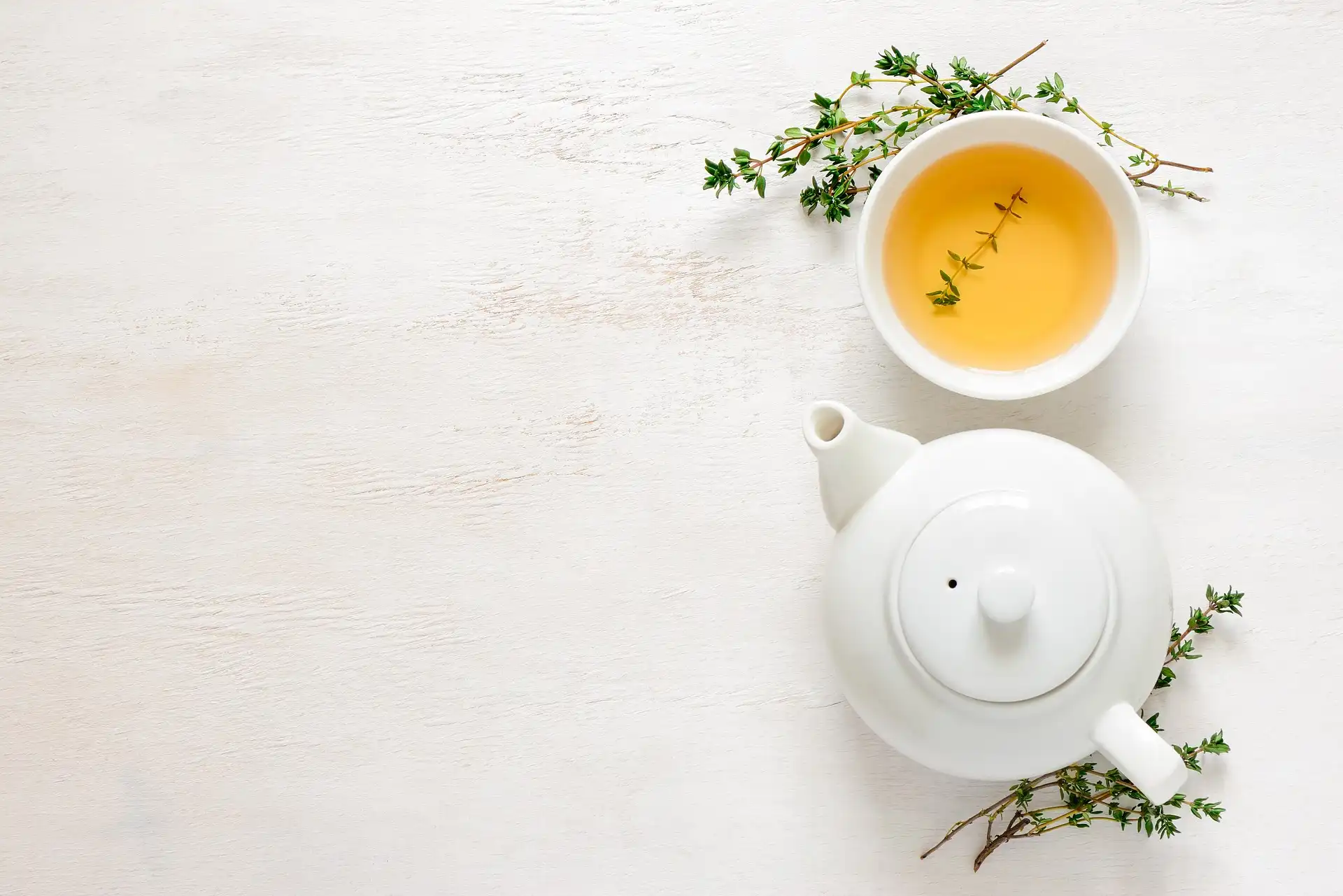Green tea originates from China and Japan several thousand years ago, according to the legend of green tea from 2750 BC. BC, and was discovered by the Chinese emperor Shen Nung.
Like white and black tea, green tea is produced from the Camellia sinensis plant, and they are distinguished by the way the leaves are prepared and processed – green tea is steamed shortly after picking (Japanese tradition) or, according to the Chinese tradition, it is fried in a pan, which prevents oxidative changes in the leaves.

Precisely certain enzymes polyphenol – oxidase, peptidases, alcohol – dehydrogenases are responsible for changes in proteins, fatty acids, amino acids and polyphenols that determine different types of tea, its medicinal properties and taste, which, among other things, is due to the origin of growth and cultivation. After heat treatment, green tea leaves are pressed and rolled into characteristic shapes of a certain size that also define it.
Green tea has over three hundred known compounds, the most famous of which is caffeine, which contains 1-5% with smaller amounts of other xanthan alkaloids (theophylline, theobromine, dimethylxanthine, xanthine, adenine); polyphenols (5-27%), most of which are catechins (flavonols); contains B group vitamins and ascorbic acid; essential oil, proteins, chlorophyll, organic acids, amino acids from which theanine is extracted.
A cup of tea contains about 50-100 mg of caffeine and 300-400 mg of polyphenols, which are responsible for the antioxidant effect of tea; affects the increase in enzyme activity and detoxification processes in the small intestine, liver and lungs, prevents the action of the urokinase enzyme that feeds cancer cells in the body. Preventing the appearance of cancerous cells is helped by stopping the formation of nitrosamines, especially if consumed with food.

Scientists have come to the conclusion that green tea helps prevent lung cancer, gastrointestinal tract cancer, and those that depend on estrogen, such as breast cancer. It acts on atherosclerosis, high cholesterol , helps with Crohn’s disease , high triglycerides and strengthens the immunity of the entire organism.
As the negative effects of green tea, scientists only cite an excessive amount of caffeine , which has too strong an effect on the nervous system and can therefore cause anxiety and insomnia, especially if more than two cups of tea are consumed daily, which is necessary for the tea to have its effect.
Recent research is in favor of green tea due to the amino acid L – theanine, which increases the ability to learn, improves concentration, calms the nerves, lowers blood pressure , relieves PMS symptoms , and also affects the action of excessive amounts of caffeine, thus reducing its negative effect, and unlike coffee, the positive stimulating effect of caffeine lasts longer. Also, some scientists believe that higher amounts of tannins and catechins have the opposite effect and can affect the appearance of esophageal cancer.

Theanine affects the increase in the level of dopamine in the brain, the increase of which is experienced by the feeling of pleasure. It acts on the intestinal microflora, destroying unwanted bacteria, helps to reduce inflammatory processes in the body, affects the reduction of tartar and bleeding gums and bacteria that cause caries, in the detoxification of the body , works in the form of eye coverings for tired and swollen eyes, and excessive exposure to the sun, helps with headaches and in the prevention of diseases of the heart and blood vessels.
It is sold in the form of tea; in filter bags, in leaflets, while the concentrate can be found in the form of tablets and various capsules, as an extract to add to dishes, as a spice and caffeine-free tea for people who consume it in larger quantities per day or those who are sensitive to smaller quantities the same.
Diluting the tea with milk reduces the effect of tannins, and people taking coagulants, suffering from insomnia, high blood pressure, asthma and heart problems should consult a doctor before consuming large amounts (more than two cups a day).

Green tea has the most effect when prepared by pouring one teaspoonful with two deciliters of boiled water, cooled to 70 degrees Celsius. Let it stand for between two and five minutes, and drink it unsweetened because otherwise it doesn’t have as much of a healing effect.
Green tea is drunk the most in China and Japan, where the rate of cancerous diseases is the lowest and life expectancy is the longest; in India, some parts of Africa, while in the rest of the world the plant Camellia sinensis is most commonly drunk as black tea.
In our country, as in the rest of Europe, people are slowly taking over the habit of drinking green tea, perhaps more out of necessity due to the effects of stress, unhealthy diet and a fast-paced lifestyle, than from the culture of drinking tea, because in our country, unfortunately, that culture is represented by another caffeine stimulant – coffee .

